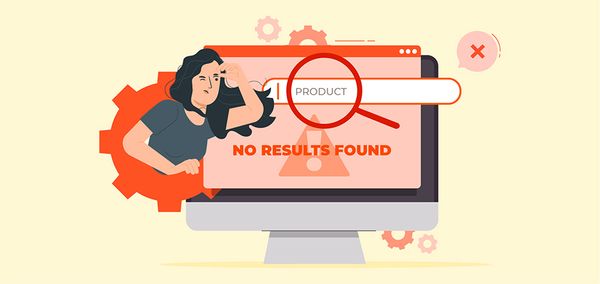10 Effective E-commerce Strategies to Boost Average Order Value

The average order value in the industry was roughly $129.23 in October 2022, according to the latest eCommerce data. It is a 16.89% rise over the average order size per customer in 2021. Raising the Average Order Value (AOV) in the e-commerce space is critical to success in 2024.
AOV is a critical metric for evaluating the expansion and profitability of a business. We'll go over ten powerful e-commerce strategies that will boost AOV and support your efforts in 2024 below.
Overview of Average Order Value (AOV)
Before checking the 10 best e-commerce strategies to increase the Average Order Value (AOV), let’s know what Average Order Value (AOV) is and why increasing it is important.
Understanding Average Order Value (AOV)
Understand AOV before entering into e-commerce strategies. It represents the mean dollar amount of every order a customer places on your site. AOV, which is computed by dividing total revenue by the number of orders, helps businesses develop targeted e-commerce strategies by providing insights into customer purchasing patterns.
Importance of Increasing AOV for Businesses
In 2024, amid evolving consumer preferences and intensifying competition, bolstering AOV is crucial. Elevating AOV not only amplifies revenue streams but also enhances customer lifetime value, fostering sustainable growth. Moreover, a higher AOV signifies increased customer engagement and satisfaction, driving brand loyalty and advocacy.
Top 10 Strategies to Boost Average Order Value
Now, let’s discuss 10 effective e-commerce strategies to increase Average Order Value in 2024:
Implement Upselling and Cross-selling Techniques
Upselling persuades customers to purchase a higher-end version of the product or service they're considering. Cross-selling suggests complementary or related products to accompany the customer's initial purchase. Upselling and cross-selling are essential e-commerce strategies for maximizing revenue and increasing AOV.
So how could you implement upselling and cross-selling?
First of all, you can group related items together and offer them as a package deal at a discounted price compared to purchasing individually. Moreover, you can leverage customer data to provide personalized recommendations tailored to each customer's preferences and interests. Lastly, you can offer discounts, promotions, or exclusive offers to encourage customers to upgrade to a higher-end option. This increases the perceived value of the higher-priced option and motivates customers to spend more.
Utilize Dynamic Pricing
Dynamic pricing involves the dynamic adjustment of product prices in response to changes in market conditions and customer behavior. Unlike static pricing, which remains fixed over time, dynamic pricing allows businesses to set prices dynamically based on real-time data and market dynamics.
By adjusting prices dynamically based on factors like demand elasticity and competitor pricing, it enables companies to maximize revenue generation. Moreover, dynamic pricing strategically promotes upsells and cross-sells by offering discounts or incentives for purchasing additional products. Additionally, it creates a sense of urgency through time-sensitive pricing strategies such as flash sales, prompting customers to make purchases quickly and thereby boosting AOV.
Offer Volume Discounts
Volume discounts serve as a potent tool for incentivizing customers to make larger purchases or opt for higher-priced items, thereby contributing to an increase in Average Order Value (AOV). By offering volume discounts, businesses encourage customers to buy more items per transaction or increase their order size to qualify for discounted pricing.
So how to offer volume discounts?
Businesses can offer bulk purchase discounts, provide discounted pricing for purchasing items in larger quantities or bulk packs. By offering a lower unit price per item when buying in bulk, customers are encouraged to purchase more items per transaction, thereby elevating AOV.
Additionally, businesses can implement loyalty-based discounts, rewarding customers for their continued patronage and encouraging repeat purchases. These discounts or perks can be tailored based on a customer's purchase history or membership status, further contributing to increased AOV.
Provide Limited-time Offers and Promotions
Limited-time offers and promotions drive urgency and stimulate purchase activity among customers. By creating a sense of scarcity and exclusivity, businesses can motivate customers to make purchases quickly, thereby increasing AOV.
Limited-time offers offer several advantages for businesses aiming to boost Average Order Value (AOV). They create a sense of urgency, prompting customers to take immediate action to avoid missing out on the deal. This urgency often leads to higher conversion rates as customers are motivated to make purchasing decisions swiftly.
Moreover, limited-time offers frequently encourage customers to buy more or spend more per transaction to qualify for the promotional offer, resulting in a higher AOV overall. Similarly, seasonal promotions capitalize on specific times of the year, such as back-to-school season or summer sales, driving higher AOV as customers stock up on seasonal products or take advantage of special offers.
5. Introduce Loyalty Programs
Loyalty programs incentivize repeat purchases and foster customer loyalty, contributing to higher AOV and customer retention.
Loyalty programs encourage repeat purchases by incentivizing customers to return to the platform to earn rewards, leading to increased frequency of purchases and higher AOV over times. And it will drive higher spending by offering rewards or discounts for reaching certain spending thresholds, motivating customers to spend more per transaction. Also, these programs foster customer engagement by providing opportunities for businesses to engage with customers through personalized offers, enhancing the overall shopping experience and encouraging higher-value purchases.
6. Enhance Product Presentation and Packaging
Effective product presentation and packaging play a pivotal role in influencing purchasing decisions and increasing AOV. To enhance Average Order Value (AOV), businesses can focus on improving product presentation and packaging.
Firstly, providing clear, high-resolution images and videos that showcase the product from multiple angles and demonstrate its features and benefits is essential. Visual content enhances the shopping experience, enabling customers to make informed purchasing decisions, ultimately leading to higher AOV.
Lastly, creating a memorable unboxing experience through customized packaging that reflects the brand identity and values enhances the perceived value of the product. Thoughtfully designed packaging leaves a positive impression on customers, encouraging them to make higher-value purchases in the future.

|
Tracking Number with Auto Sync Auto Sync Tracking Numbers - Automatically sync the tracking number from AliExpress to your store |
7. Optimize Checkout Process for Add-on Sales
The checkout process presents a prime opportunity to encourage add-on sales and increase AOV. To increase Average Order Value (AOV), businesses can implement various strategies during the checkout process.
First of all, suggestive selling involves recommending complementary or related products to customers based on their current selections. By suggesting additional items that complement their purchase, businesses can increase the overall value of the transaction and drive higher AOV.
Moreover, one-click upsells offer customers the option to add complementary products to their order with a single click during the checkout process. This streamlined purchasing experience encourages impulse buys, leading to higher AOV.
8. Leverage Social Proof and User-Generated Content
Social proof and user-generated content (UGC) play a pivotal role in influencing purchasing decisions and increasing AOV. In the context of e-commerce, social proof takes the form of customer reviews, testimonials, ratings, and endorsements, which serve to validate the quality and desirability of products or services.
Business can encourage satisfied customers to leave reviews and testimonials sharing their experiences with your products or services. Displaying authentic customer feedback builds trust and confidence in your brand, leading to higher Average Order Value (AOV) as customers are more likely to make purchases based on positive recommendations.
Also, curate and showcase UGC such as photos, videos, and social media posts featuring your products in real-life scenarios. UGC provides social proof of your product's value and utility, making it more enticing for prospective customers and driving higher AOV.
9. Invest in Customer Support and Upselling Training
Effective customer support and upselling training are essential components of successful e-commerce strategies for increasing AOV. By investing in customer support infrastructure and providing training to frontline staff, businesses can enhance the shopping experience and drive higher-value purchases. Let's explore the strategies for implementation:
Businesses can offer multiple support channels such as live chat, email, phone support, and social media. Providing diverse support channels ensures that customers can reach out through their preferred method, leading to quicker issue resolution and higher satisfaction.
10. Personalized Recommendations
Personalized recommendations are a powerful e-commerce strategy for enhancing the shopping experience and driving higher AOV. By leveraging customer data and behavioral insights, businesses can provide tailored product recommendations that resonate with individual preferences and interests. So how could use it for AVO?
First of all, businesses can utilize data-driven insights by harnessing customer data and behavioral insights to understand individual preferences, purchase history, and browsing behavior. Analyzing this data helps identify patterns and trends, allowing businesses to deliver personalized recommendations that resonate with each customer's unique interests and needs.
Also, business can implement collaborative filtering by deploying algorithms to generate personalized product recommendations based on similarities between customers' preferences and behaviors. Collaborative filtering analyzes past interactions and purchase history to predict which products a customer is most likely to be interested in, driving higher Average Order Value (AOV) through relevant and targeted recommendations.
Conclusion
Implementing effective e-commerce strategies is paramount for boosting Average Order Value (AOV) and driving sustainable growth in 2024. By leveraging tactics such as upselling and cross-selling, dynamic pricing, volume discounts, limited-time offers, loyalty programs, enhanced product presentation, optimized checkout processes, social proof, and user-generated content, investing in customer support and upselling training, and personalized recommendations, businesses can maximize revenue generation and enhance customer satisfaction. Embrace these e-commerce strategies to thrive in the competitive landscape of 2024 and beyond.
Want to find out more? Visit us at DSers blog.












 Company
Company
 Why Choose DSers
Why Choose DSers
 Blog
Blog
 Help Center
Help Center




 Live Chat
Live Chat